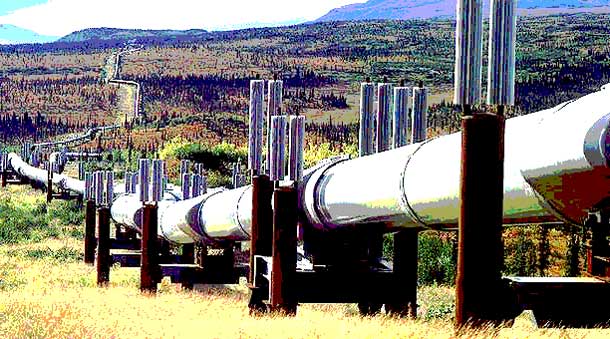

Oil Industry – Pipeline is a $12 billion Bonus
CALGARY – Trans-Canada Pipelines will be making a presentation to Thunder Bay City Council on pipeline expansion. By 2017, Trans-Canada is planning to ship up to 1.1 million barrels of oil per day through the updated pipeline. The project moving across Canada is projected to flow $12 billion into the economy in jobs and purchases of equipment.
All is not smooth welding for the proposed pipeline. Across Canada there are groups protesting the pipeline. That is causing unneeded delay and costs according to the petroleum industry. “Canada’s economy loses tens of millions of dollars daily because pipeline bottlenecks choke access to more lucrative markets for Western Canadian conventional heavy crude oil and oil sands bitumen”, concludes a new study published by the Fraser Institute.
“The perception that only Alberta benefits from the oil sands is incorrect. The prosperity of a broad swath of Canadians is dependent on the growth of Canada’s oil production,” said Kenneth P. Green, Fraser Institute Senior Director of Natural Resource Studies and co-author of the study. “Capacity must be put in place to allow Western Canadian crude oil to reach tidewater on Canada’s western and eastern coasts – if Canada is to get its oil to markets where higher prices can be realized.”
The Fraser Institute says, “Most Western crude sells at a discount in the United States midcontinent region, where oil pipelines are generally operating at or close to full capacity”. Similar heavy oils fetch higher prices at refineries in the U.S. Gulf of Mexico region and in the U.S. northeast according to The Canadian Oil Transport Conundrum.
Even the proposed Keystone XL pipeline won’t resolve the problem because Canadian producers would still have to compete for capacity in the line with surging U.S. shale oil production from North Dakota and a number of other states.
From 2011 through May 2013 Western Canadian Select heavy crude oil sold in the mid-continent region at an average $36 US below the price for North Sea sweet light crude, a world benchmark. By contrast Mexican Mayan crude oil which is similar to Western Canadian conventional heavy crude, sold in the U.S. Gulf region at a “modest discount” to the world price.
The discount to North Sea light crude, as captured by the Brent price marker, was only $14 US a barrel during the 2008-2010 period. Since then, Western Canadian Select has not increased in price at the same pace as Brent.
The study describes a “huge ongoing and increasing loss of revenue.” For example in the fourth quarter of 2012 Canada exported conventional heavy crude and bitumen blends at a combined production rate of 1.27 million barrels a day. At that rate, with an average $37 (U.S.) per barrel discount to the Brent price, Canada was losing $47 million a day on average, implying $17 billion a year.
“Canada’s oil does not command the price that it could on a world market because it’s bottled up in the Midwestern United States, where it causes a glut, and can’t get out to the refiners on the Gulf Coast and offshore refiners and destinations where it can command a higher price,” Green said.
The discount is a problem for all Canadians, Green said. A lower price means economic and financial losses for petroleum companies and their shareholders, less royalty and other revenue which provincial and territorial governments can redirect to health care and education, and less revenue for pension funds such as the Canada Pension Plan which hold shares of oil producing companies.
A resolution to the problem is urgent, Green added.
“You cannot assume that the market Canada is pursuing will be there forever. We have a limited time window in which to exploit the market, and the assumption that we can dilly-dally and take our time is a poor one.”
Study author Dr. Gerry Angevine, Senior Fellow in the Fraser Institute’s Centre for Natural Resource Studies, warned that the situation will become more acute as investment in the oil sands continues – the National Energy Board projects Canadian oil production will nearly double by 2030 with most of the increase coming from Alberta.
The study recommends a “proactive policy approach” including streamlined pipeline construction regulations and federal efforts to achieve Aboriginal acceptance of increased pipeline capacity.
The Canadian Oil Transport Conundrum is the first in a series of upcoming Fraser Institute reports examining the issues affecting transportation of Canadian oil and the impediments to getting it market.















 U18 Kings Bow Out at West Regional – Schultz, Regina Dominate the Ice
U18 Kings Bow Out at West Regional – Schultz, Regina Dominate the Ice